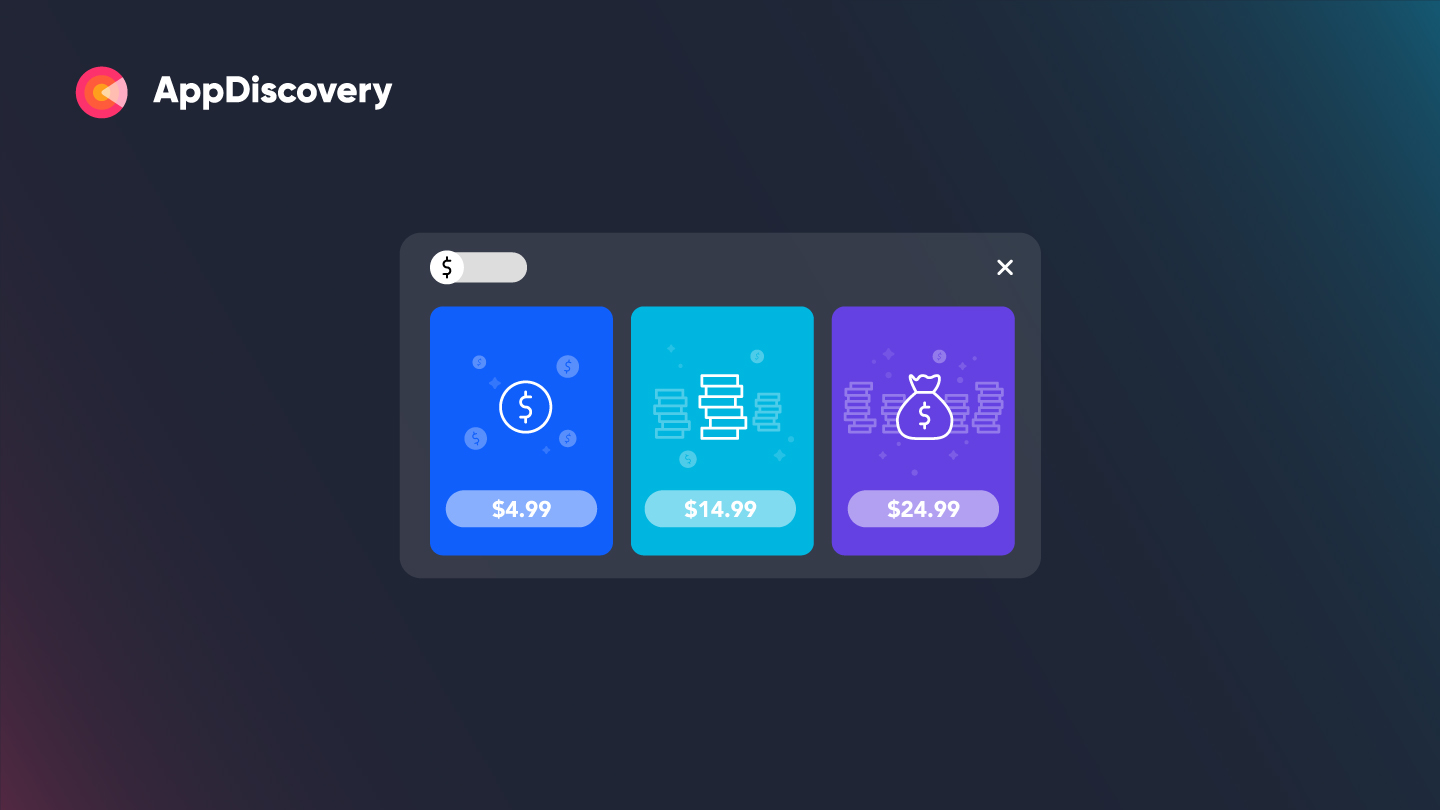Monetization, Performance Marketing
How to win with IAP return on ad spend campaigns
Jun 20, 2024

Monetization, Performance Marketing

Whether you’re selling extra lives, feature unlocks, or something else entirely, AppDiscovery can help you target Return on Ad Spend — or ROAS — using automation and machine learning. This, in turn, will help you efficiently hit your IAP ROAS goals.
IAP, or in-app purchases, are typically optional app add-ons that bring new content to users. In a game, they are often used to give players quality of life improvements, extra inventory space, items, and more.
Mobile in-app purchases are a simple, proven way to quickly monetize an app and generate revenue. But you must consider a few things for your IAP strategy:
IAP ROAS is one of the most important metrics in ROAS marketing and UA in general, as it measures which users you’ve acquired that are making purchases within your app. These are the users who offer the most LTV for gaming and non-gaming apps alike.
Before diving into an IAP ROAS campaign, make sure you’re engaging and retaining users.
The formula for retention is simple: Active users divided by the number of installs in your cohort. Gaining new users, however, can be easier than retaining them. But if you can’t convince your users to stick around, you can’t sell to them later.
Quick tip
Play some of the successful games or apps that you’ll be competing with. Identify common design patterns, mechanics, and/or gameplay elements that you can use in your own app and IAP strategy.
With that in mind, think about how you can engage a user every time they open your app. If you reward players too soon, it can be meaningless. Reward them too late and they may have already churned. The balance between the two is tricky at best, so A/B testing is the only way to discover what works.
The following key metrics are important to track to help you understand and refine your IAP strategy:
The difference between AppDiscovery IAP ROAS campaigns and Ad-ROAS campaigns is that IAP ROAS optimizes for in-app purchases instead of ad revenue to optimize campaigns for purchasers and not just installs. Ad-ROAS campaigns, on the other hand, use ad revenue data. It also bears mentioning that Ad ROAS campaigns can only be leveraged by publishers if they are using MAX.
But before you dive into an IAP ROAS campaign, you should have a strong understanding of your app, its audience, and how to engage them effectively. If you’ve reached this point, then you’re at a good point to consider an IAP ROAS campaign strategy.
Some examples of partners that have used IAP ROAS as part of their success include:
Basic IAP ROAS campaigns are run as either Day 0 or Day 7 campaigns.
Again, there’s no magic formula for an IAP ROAS campaign, and a realistic target varies significantly depending on the type of app and the type of campaign (Day 0 or Day 7). Some apps, for example, can achieve ~10% IAP ROAS in a Day 7 campaign, while others can achieve markedly more or less. Some types of games, for example, might earn higher IAP ROAS faster, but these frequently also have much lower retention.
You should also consider what recoup looks like for your clients. For example: What’s the average drop-off rate? Do users play for a targeted number of days, maybe 180 days, or a full year? if so, what’s their expected lifetime value (LTV)? That will help you better understand profitable CPI’s and what your D7/D30/DXX ROAS targets should be.
The bottom line is to pick something realistic based on the app genre and the audience, which is why, again, it’s vital that you know your app and its audience well before attempting an IAP ROAS campaign. It’s for this reason that IAP ROAS campaigns are generally best suited for developers that understand where their product is in the market and understand the competitive landscape. including what is competitive on other ad platforms.
However, once you’re armed with a thorough understanding, an AppDiscovery IAP ROAS campaign can be an efficient and effective tool for managing, increasing, and hitting your IAP ROAS goals.